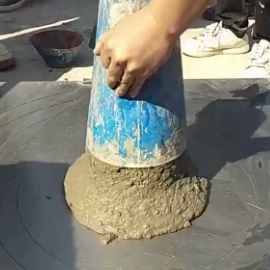Post Date:29,Jul,2024
Description of false coagulation:

The phenomenon of false setting means that during the concrete mixing process, the concrete loses fluidity in a short period of time and seems to enter a setting state, but in fact the hydration reaction does not actually occur and the strength of the concrete will not be improved. The specific manifestation is that the concrete mixture quickly loses its rolling properties within a few minutes and becomes hard. It almost completely loses its fluidity within half an hour. After it is barely formed, a large number of honeycomb pits will be found on the surface. However, this condensation state is temporary, and the concrete can still regain a certain fluidity if remixed.
Analysis of causes of false coagulation:
The occurrence of false coagulation is mainly attributed to many aspects. First of all, when the content of certain components in cement, especially aluminates or sulfates, is too high, these components will react quickly with water, causing the concrete to lose fluidity in a short period of time. Secondly, the fineness of cement is also an important factor affecting false setting. Too fine cement particles will increase the specific surface area and increase the area in contact with water, thereby speeding up the reaction speed and causing false setting. In addition, improper use of admixtures is also a common cause. For example, water-reducing admixtures react chemically with certain components in cement to form insoluble substances. These insoluble substances will absorb a large amount of water, resulting in reduced fluidity of concrete. Conditions such as temperature and humidity in the construction environment may also affect the fluidity of concrete, causing false setting.
The solution to the problem of false coagulation is as follows:
First of all, work hard on the choice of cement. Different cement varieties have different chemical compositions and reactive characteristics, so it is important to choose cement varieties that are less likely to cause false setting. Through careful screening and testing, we can find the cement that best suits the needs of the current project, thus greatly reducing the risk of false setting.
Secondly, we also need to be extremely cautious when using admixtures. Suitable admixtures can effectively improve the workability of concrete, but if used improperly or if admixtures incompatible with cement are selected, false setting problems may occur. Therefore, we need to reasonably adjust the type and dosage of admixtures according to the specific conditions of the project and the characteristics of the cement, or optimize their performance through compounding to ensure that the concrete can maintain good fluidity.
Finally, the temperature of the construction environment is also an important factor affecting the fluidity of concrete. In a high-temperature environment, the water in concrete evaporates easily, causing the concrete to solidify quickly. In order to solve this problem, we can take measures to lower the mixing temperature, such as pre-cooling the aggregate before mixing, or using ice water for mixing. By lowering the temperature, we can effectively slow down the setting speed of concrete, thereby avoiding the occurrence of false setting.
Post time: Jul-29-2024






